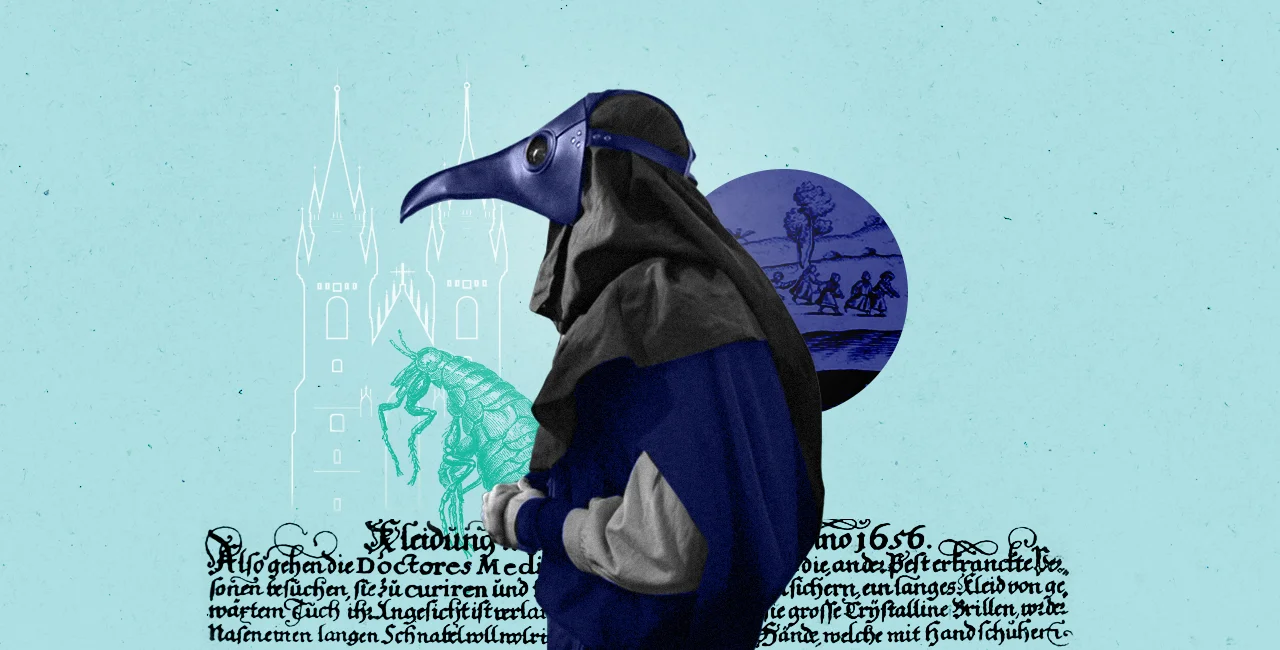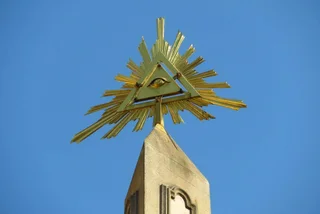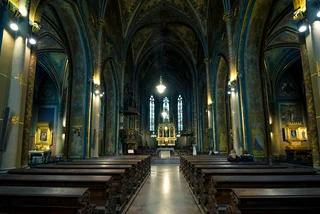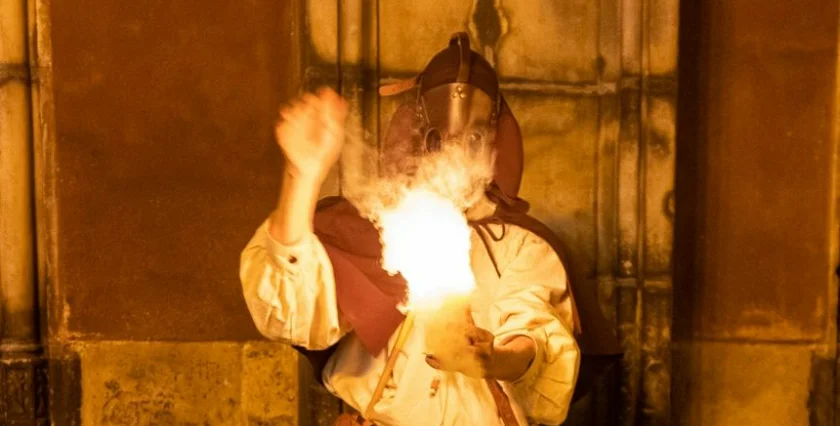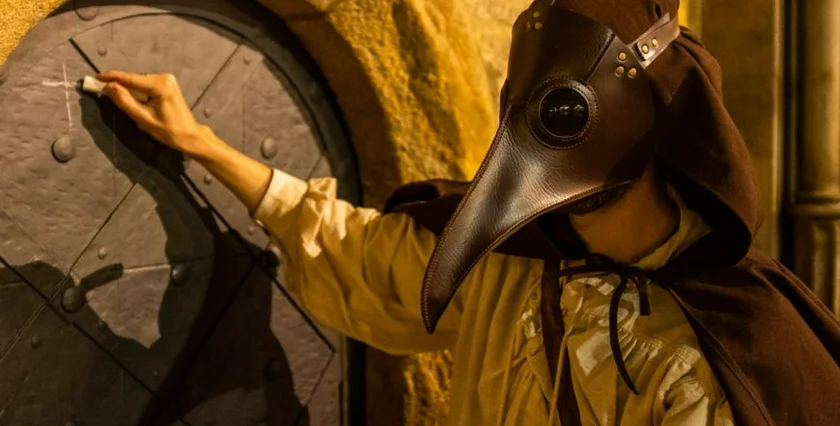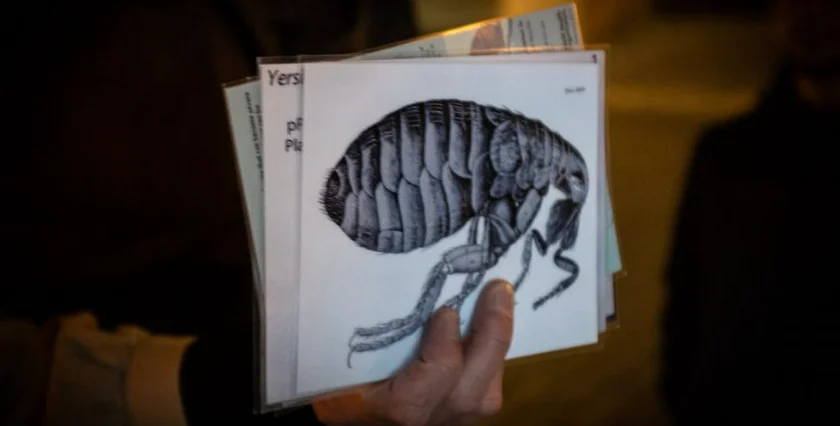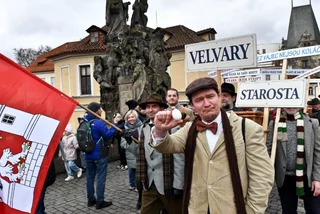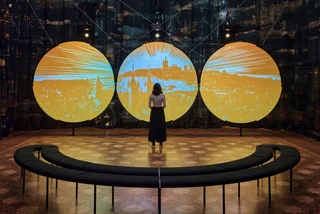Between the 14th and 18th centuries, early modern Bohemia was rocked by multiple, deadly plague outbreaks that claimed thousands of lives.
Prague first encountered the "Black Death" around 1350 and large outbreaks would hit the city every five to 10 years on average until 1715. The largest outbreak took place in the 17th century. Although records are patchy, an estimated 300,000 people in the Czech lands died from plague outbreaks.
The Plague Doctor tour, which Forbes and The New York Times have written about, recreates the dark days of Prague's Old Town during the plague. Led by David Merten and his team since 2019, this 90-minute tour delves into Prague locations associated with this somber chapter of history.
David's fascination with the topic sparked the idea to offer a special plague-themed tour, aiming to educate others about the operations of plague doctors. Extensive research trips to Hamburg and Venice provided valuable insights into the work of these doctors, their treatment methods, and societal reactions to the disease.
But it was during research for his Nightwatchman Tour – also offered in Prague – that David came across the story of Alexandr Šamský, an early modern doctor who is credited with undertaking seminal research that helped better understand and fight the disease in the late 17th and early 18th century.
Following in Dr. Šamský's footsteps, the tour offers some fascinating insights into how plague doctors worked, what they used to treat the sick, and how society reacted to the deadly disease.
Daily reminders of the plague’s deadliness
We met our helpful guide Tomáš – donning a plague doctor's outfit from the 1700s and holding a lantern and briefcase – at the House at the Golden Well near Prague’s Klementinum, our first stop.
At this 14th-century building, our plague doctor showed us sculptures of two saints, Sebastian and Roch, who were said to protect against the plague. People would pray to both to cast away the disease, with St. Roch pulling up his trousers to show swelling on his leg, which was a symptom of the bubonic plague. Another daily reminder of the profound impact of the plague on Czech society is related to present-day currency.
How Prague protected its inhabitants against the Plague
- Miasma, a foul and poisonous smell or vapor, was associated with the plague and believed to cause disease. People during the plague sought ways to completely block out miasma.
- We were given strips of paper as a smell test to identify scents that were thought to help ward off the plague.
- Unusual methods of disinfection were employed to eliminate the disease. We also sampled a small licorice-flavored "treat" that people once believed provided protection from the plague.
The figures of Emperor Charles IV and Jan Amos Komenský on Czech money show the profound impact of the plague on society. Charles IV, featured on the CZK 100 note, had a significant role in overseeing the kingdom's response to the devastating Black Death during his reign in the Middle Ages.
On the CZK 200 note, 17th-century theologian Komenský, who tragically lost his entire family to the plague, serves as a poignant reminder of the immense toll and widespread devastation caused by the disease.
The plague doctor costume
During the second stop of the tour at the courtyard of the Klementinum, Tomáš revealed what was on everyone's minds – what is the story behind the plague doctor costume?
According to the tour, the traditional plague doctor attire, including the iconic "bird mask," was introduced by Charles Delorme in the early 1600s. The mask was worn for multiple reasons – birds were seen as more resilient to the plague, and the shape of the mask also ensured full protection against miasma. The beak could be filled with aromatic herbs or perfumed rags to block out the bad air.
Plague doctors were clothed head to toe, and their masks had built-in goggles to protect the eyes. Sticks were carried so the doctor could examine patients from a distance, while head-to-toe clothing staved protected against noxious air.
Prague locations associated with plague
The tour gives insight into places that many people pass every day. Mariánské náměstí, currently home to City Hall, used to be home to a now-destroyed church, Virgin Mary at the Pond (Kostel Panny Marie Na louži), and the surrounding cemetery for part of Old Town. Religion played a big role, with the Roman Catholic Church holding that the disease was divine punishment.
One of the main ways to battle the plague In the 16th century was quarantine, and those who didn't follow the rules and ventured outside were handed a harsher punishment than in the 2020s – they were executed. Nightwatchmen would patrol the streets of Prague to ensure people from houses affected by the plague stayed indoors.
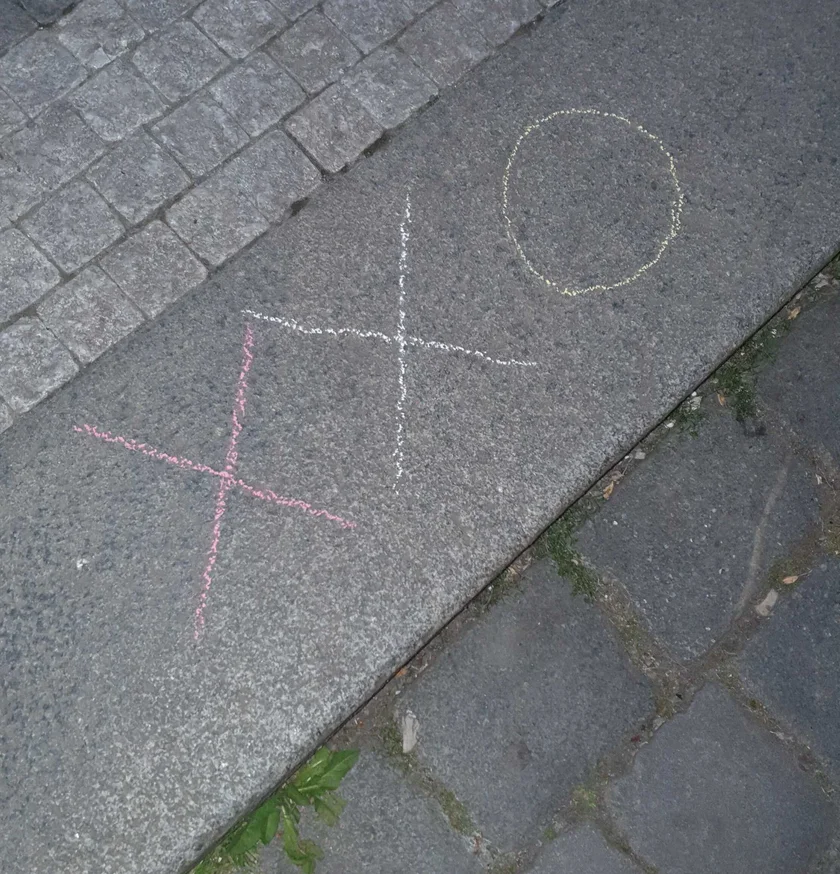
Tomáš showed us three symbols used to mark the front doors of houses: a purple cross, a white cross, and a yellow circle. These showed the infection status of a household so watchmen and others would know if the people were under quarantine.
Tomáš then took us toward the Jewish Quarter and said that foreigners and Jews were blamed for causing the plague. Jews in Prague were treated very harshly and were forced to quarantine even if they were healthy.
Death at your door
Approaching the end of our trip, Tomáš explained multiple perceived causes of the plague, which led to widespread cruelty and marginalization in many instances.
Passing by the Na Františku Hospital, which has roots going back to the 14th century, Tomáš told us of the various mortality rates for the different types of plague – bubonic, septicemic, and pneumonic – and the importance of modern medicine that helped eliminate the disease in Czechia.
Our last stop was St. Castulus Church (kostel sv. Haštala) at Haštalské náměstí, It is symbolic because it had the last graveyard in Prague's city center. The others had been closed down in the late 18th century, in an effort to stop disease.
Death was an inherent – in some cases unavoidable – part of the plague in early modern times, and this Plague Doctor tour underscored just how fragile life was centuries ago.
A worthy tour
For anyone wanting to learn about any aspects of the plague in early modern Bohemia, this guide is perfect. You will learn countless interesting – often shocking – facts about the plague and its treatment centuries ago. The tour also handily takes you through the streets of the Old Town, giving you a chance to get a real feel for the heart of the city.
The interactive nature of the tour, featuring mini quizzes, will keep you engrossed throughout the 90 minutes. Following a guide dressed as a typical plague doctor, this tour provides a perfect atmosphere – by the end of it, you may feel like a plague doctor yourself.
The Plague Doctor tour is also offered to private groups and online 24/7. Reservations can be made at night-watchman.net.












 Reading time: 5 minutes
Reading time: 5 minutes 